Exotic vegetable with an unusual taste and name - pumpkin "Pink banana": variety description
What do you imagine when you hear the phrase "pink banana"? Probably an ordinary banana, only pink. And what will be your surprise if you are told that gardeners and gardeners do not mean a fruit at all, but a vegetable by Pink Banana. This is the name given to one of the pumpkin varieties due to its unusual shape and color.
In this article, we will consider in detail what the Pink Banana pumpkin is and how to grow it correctly.
The content of the article
Description of pumpkin variety
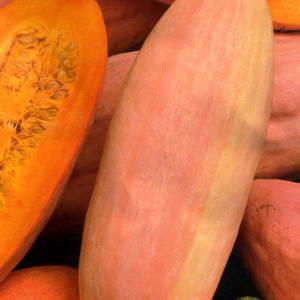 The original name of the variety sounds like Jumbo Pink Banana Squash (Pink Jumbo Banana). Previously, culture was related only to ornamental plants. For the first time, the Pink Banana appeared in America more than 100 years ago, and in our country they learned about it relatively recently.
The original name of the variety sounds like Jumbo Pink Banana Squash (Pink Jumbo Banana). Previously, culture was related only to ornamental plants. For the first time, the Pink Banana appeared in America more than 100 years ago, and in our country they learned about it relatively recently.
The pumpkin has long and strong lashes that need to be untied in time, otherwise they are intertwined. The exotic plant is especially appreciated by lovers of unusual and beautiful crops.
Distinctive features
The plant takes root well even in the open air. The bushes are vigorous, the root system is strong and developed. The leafiness is medium, the color is dark green.
Subject to all agrotechnical rules, vegetables are tied throughout the summer. Up to three pumpkins ripen on one lash. The best results are obtained if the bushes are formed in advance.
The pink banana belongs to the mid-season varieties, the first ripe pumpkin is obtained after 90-100 days.
Characteristics of vegetables
As befits a banana, the shape of the fruit is elongated, reaching 1.1 m in length. The tip is pointed, the crust is hard. On average, the weight of one pumpkin varies from 4 to 18 kg. The color is pink-yellow.
In the process of ripening, the shell becomes harder, and the fruit acquires a rich pink color. The pulp of the pumpkin is fiber-free, pleasant and soft. It tastes sweet and juicy. Due to carotene, it has an orange tint.
Yield
The number of mature pumpkins depends on the region of cultivation and care. Subject to all the rules, about 50 kg are collected from one bush. The harvested vegetables are perfectly stored.
How to grow
There are several ways to grow a Pink Banana. Each of them has advantages and disadvantages, we will consider them below.
Planting with seeds
It involves planting seeds directly into open ground without preparing seedlings. Produced in late May or early July. For this method, it is imperative to disinfect the seeds - they may contain dangerous microbes or pathogens.
Fitosporin + was recognized as an excellent disinfectant. Soak seeds in Fitosporin solution for 2 hours. The product is sold in the form of powder, paste or solution in any gardening store.
Next, you should work the land. Dig up the beds since autumn, free from debris and remnants of old plants. With the arrival of spring, pour the earth with a solution of potassium permanganate or hydrogen peroxide. These products perfectly rid the soil of insect larvae and dangerous microorganisms.
Important! Choose a cloudy morning for planting.
The required distance between plants is at least 1.5 m. Otherwise, the root system will have nowhere to develop. If you live in a region with a variable climate, cover the Pink Banana with plastic wrap.
Planting seedlings
To prepare seedlings, in addition to seeds, you will need a container and soil.Any flower pots, wooden boxes, plastic buckets are suitable as containers. The main thing is that the container is clean and dry. If you don't have anything suitable on hand, purchase special seedling containers or cassettes from the store.
Many gardeners prepare the soil for seedlings on their own. For a pumpkin, the following composition is considered an excellent option: 4 parts of land from the garden, 1 part of humus, 1 part of sawdust or river sand. After mixing the components, be sure to pour the soil with a solution of potassium permanganate.
Once everything is ready, fill the container with soil, making small holes in it. Dip a seed into each, sprinkle it with earth on top and pour it with warm, settled water.
Important! If you are growing the Pink Banana not in separate containers, but in one container, put some expanded clay underneath for drainage. The optimum thickness of the interlayer is about 2 cm.
Prepare the seedlings about 20 days before planting outdoors. Dates depend on the region of residence and weather conditions.
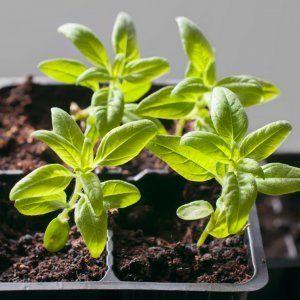
Disembarkation takes place in early June. The best precursors for pumpkin are legumes, potatoes, and onions. The beds should be even.
Remove seedlings with as many roots as possible and be careful not to damage them. After placing young plants in the holes, slap the soil tightly so that there are no voids.
Do not forget to water the pumpkin, 1 bush takes about 0.5 liters of water. If the weather is clear and the sun is hot, cover the seedlings with a newspaper.
Care
Pumpkin loves water. The root system of the plant is branched and powerful, so frequent watering is needed. The average interval between them is 4-6 days, depending on weather conditions.
Especially the Pink Banana needs hydration during flowering and fruiting periods. The water temperature should be at least 20 degrees. Thanks to its strong roots, the culture tolerates periods of drought and heat well.
To obtain a good harvest, the plant is formed into one or two stems. If forming into one stem, remove additional ovaries immediately after they appear. Be careful not to damage the main stem. When forming into two stalks, leave two pumpkins on the main whip, and one on the side. Next, pinch the tops and leave 3-4 sheets on each lash.
Important! Don't forget about the whips. If they grow too long, untangle them and cover them with earth. If this is not done in time, they will get confused and break the leaves, which will negatively affect the development of the pumpkin itself. In addition, loosen the beds every 8-10 days and remove weeds.
Another necessary stage of care is feeding. Try to alternate mineral and organic fertilizers. For example, feed the Pink Banana with nettle infusion for the first time, fertilize it with Nitrofoskoy the second time.
Pay special attention to feeding during the fruiting period. A solution of wood ash is recognized as an excellent fertilizer. It not only has a positive effect on the quality of the crop, but also protects the crop from pests.
Read also:
Delicious and healthy treatment with natural ingredients - pumpkin and honey for the liver.
Features of cultivation and possible difficulties
The quality of the crop largely depends on the place of cultivation. Set aside a sunny, windless place for the plant in your area. It is desirable that there is fertile and loose soil, as well as deep and arable. We do not recommend sowing pumpkin after cucumbers or zucchini.
Use growth stimulants to speed up plant development. This is especially true for gardeners living in regions with a temperate climate and short summer. Zircon and Kornevin are recognized as excellent drugs. Use them as an addition to watering. With their help, the yield of the Pink Banana is increased by 10%. Remember to read the information on the package and follow the dosages before use.
Important! If you add the drugs incorrectly, you get the opposite effect - the plant will slow down in growth. The pumpkin will begin to develop only at the expense of internal reserves and will soon die. You should also not process the pumpkin after flowering, because it is useless.
Growing tips from experienced gardeners
When growing vegetables in seedlings, farmers are advised not to forget about fertilizing seedlings. The first top dressing is applied 2 weeks after planting. Mineral fertilizers, such as ammonium nitrate, are an excellent remedy. And a few days before planting, it is recommended to harden the seedlings. To do this, take it out to the balcony, first for 1-2 hours, then gradually increasing the time outside the room.
Many farmers plant Pink Banana on a compost heap with some ash and superphosphate added. And adding sawdust or sand will create the necessary drainage layer. River sand is especially suitable.
Also, experienced gardeners with a seedless planting method are advised to use a film. As soon as the first shoots appear, make cuts above each plant in the film for ventilation. When the risk of frost has passed, carefully remove the cover.
Diseases and pests
Any pumpkin can get sick with powdery mildew. This fungal infection appears as a white coating on the leaves. It then spreads to the stems and neighboring plants. In the future, the leaves acquire a brown tint, the plant slows down development, the pumpkin does not ripen.
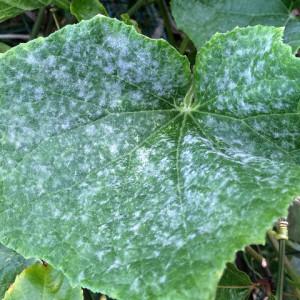
As a preventive measure, use spraying with a solution of tobacco leaves. Also, do not forget to remove weeds in time, as pathogens of the fungus may be in them.
There is a high probability of getting sick with root rot. Due to the disease, the stems weaken and break. Then the lashes dry up and growth stops. The reason for the appearance of rot is high humidity and a lack of fertilizing. For prevention, use watering with the addition of urea.
Of the insects, the vegetable is most often attacked by the whitefly, aphid, mucus or wireworm. The causes of the appearance of insects are hot and dry weather, contaminated soil, non-compliance with the rules for caring for plants.
To prevent insects from emerging, remove weeds in time, spray the bushes with a spray bottle in hot weather, add an onion peel-based spray. If the pumpkin is growing in a greenhouse, remember to ventilate the facility.
Harvesting and application of the crop
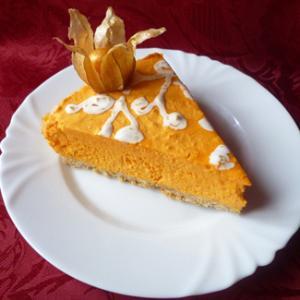
Harvested in dry weather. It is recommended to remove vegetables together with the stalk, tearing it off the bush by only 4-5 cm. They do this so that the pumpkin is stored longer. If it's a dry and warm autumn, ripe vegetables are left in the beds for another 1-2 weeks. When harvesting after rain, be sure to dry the vegetables in a warm place.
Pumpkin contains a large number of useful elements, therefore it is widely used in cooking dietary meals... For example, they make pumpkin pie with ginger and nutmeg. Also, the vegetable is suitable for preparing milk cereals, soups and salads.
Interesting! In the United States, the largest pumpkin pie was baked - its diameter was 152 cm. To make it, 3 kg of pumpkin, 144 eggs and 1.5 kg of sugar were needed. This giant was baked for 6 hours.
Pumpkin seeds are actively used in folk medicine. It is an excellent diuretic, which additionally has a beneficial effect on the functioning of the gastrointestinal tract. Also pumpkin is used as a remedy for seasickness. Surprisingly, the older the seeds are, the healthier they are.
Advantages and disadvantages of the variety
The pink banana is a real miracle, not a pumpkin. The vegetable has a number of remarkable properties:
- excellent taste and moderate sweetness;
- original appearance;
- versatility in use;
- unpretentious care;
- high productivity;
- immunity to disease;
- resistance to transportation.
There are no obvious flaws in the variety, only sometimes gardeners note that the vegetables are too heavy.To prevent the stems from breaking, you have to build additional support for the pumpkin.
Reviews of gardeners
Valentina, Moscow: “I am very glad that I was advised to plant a Pink Banana. I have never had such a beautiful vegetable. And everything is great with taste! The pulp is sweet and juicy, the aroma is weak, so you can safely add it to different dishes. "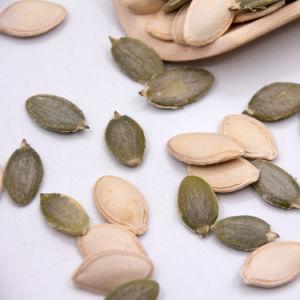
Irina, Nizhny Novgorod: “Growing a pumpkin is not always easy, but interesting. Especially when such unusual specimens are obtained. Gathered a rich harvest, the largest "banana" turned out to be 13 kg. Stored well, put it in a dry and cool basement. "
Alexander, Oryol: “The land on the site is fertile, but for some reason the variety has taken root badly. Maybe because he planted without seedlings. The stems are sluggish, developed poorly, and the lashes turned out to be weak. The pumpkins themselves seem to be quite good, but I have come across more successful varieties before. "
Conclusion
The Pink Banana variety will decorate your garden. Large pink vegetables taste great. They are moderately sweet and are widely used in cooking. Both pulp and seeds are suitable for use. In addition, pumpkin is low in calories - it contains only 24 kcal per 100 g.
It is good to eat a few pieces of pumpkin after meals to improve digestion. Therefore, feel free to grow the Pink Banana variety on your site. Moreover, it is unpretentious in care, the main thing is to water and feed the bushes on time.